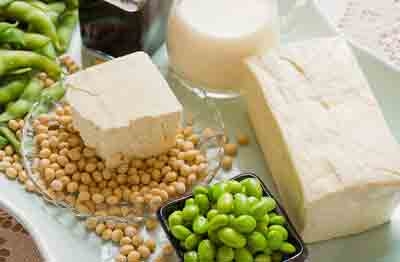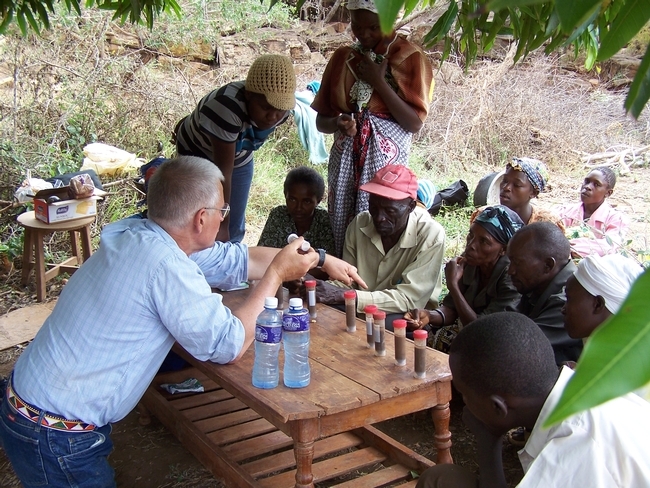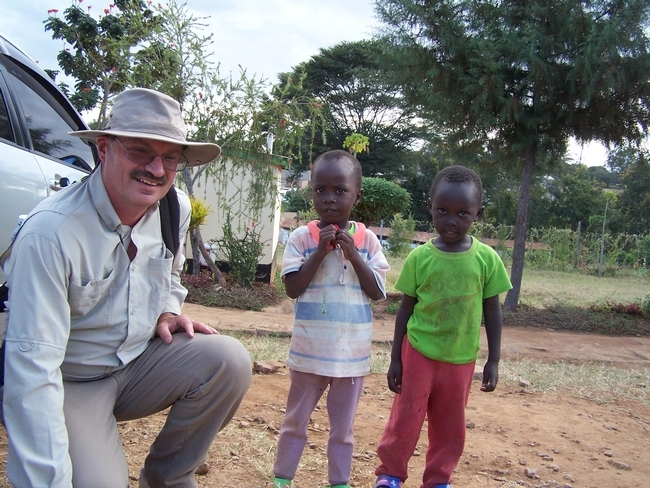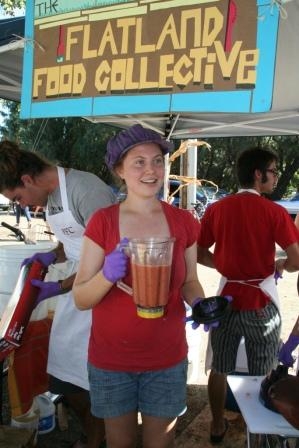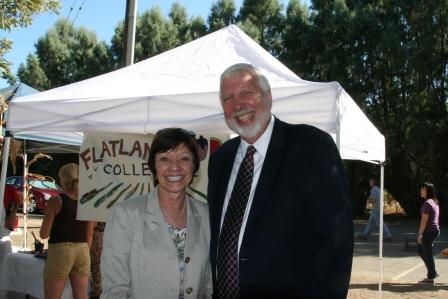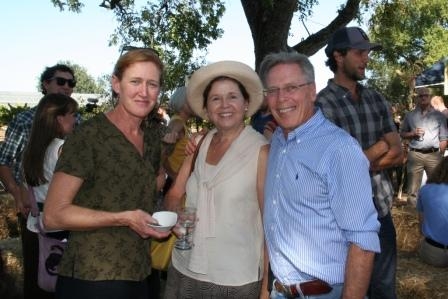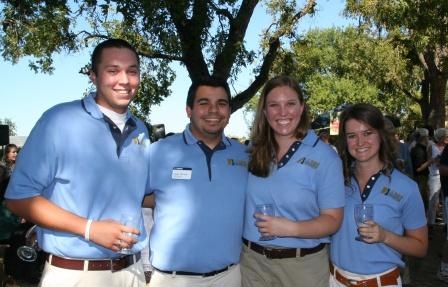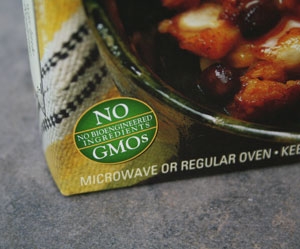UC Food Blog
Antioxidants in soy protein may help protect against heart disease
Diet and lifestyle choices are major factors contributing to the risk of cardiovascular disease, which is responsible for more deaths in the United States than any other cause.
One dietary component that has received considerable attention for its potential heart-protective effects is soybeans, which contain lean vegetable protein, dietary fiber and antioxidants called isoflavones.
In a recent issue of the University of California’s California Agriculture journal, scientists reviewed research concerning the relationship between soy and heart disease. Several potential mechanisms have been identified for the observed cardioprotective effects of soy, including cholesterol-lowering properties, antioxidant activity and gene regulation.
“Soybeans and foods made from soy are the major source of isoflavones, which serve as antioxidants, scavenging and neutralizing free radicals that might otherwise cause inflammation and increase the risk of heart disease,” wrote Emily R. Cena, senior writer, and Francine M. Steinberg, professor and chair of the UC Davis Department of Nutrition.
Soy acts like compounds similar to the hormone estrogen, such as blood vessel dilation and gene regulation. “Some health concerns have been raised related to soy's estrogenlike properties, particularly with regard to breast cancer risk, but these concerns were beyond the scope of the current article,” the authors wrote.
The preponderance of research shows that soy isoflavones increase levels of cardioprotective HDL (“good”) cholesterol and decrease levels of LDL (“bad”) cholesterol, thereby lowering the risk of heart disease. Soy may also help ameliorate metabolic syndrome, a constellation of risk factors including abdominal obesity, high blood pressure, insulin resistance and alterations in blood lipids that result in increased risk of heart disease and type 2 diabetes.
A current research project funded by the UC Davis Center for Health and Nutrition Research is investigating the effects of consuming whole soy foods on biomarkers of cardiovascular risk in individuals with metabolic syndrome; it may be completed in 2012.
“Soy isoflavones have a broad variety of biological actions,” Cena and Steinberg wrote. “The beneficial effects of soy are modest compared to pharmacological treatment, such as statin drugs. However, the cumulative effects over a lifetime are likely to be significant.”
The authors highlight epidemiological studies suggesting that Asian populations consuming large amounts of soy have lower rates of cardiovascular disease than Western populations. For example, in the mid-1990s a meta-analysis of 29 clinical trials found that compared to animal protein, soy protein significantly reduced blood levels of several fats (total cholesterol, LDL cholesterol and triglycerides). This prompted the U.S. Food and Drug Administration to approve the current health claim that 25 grams of soy protein per day, as part of a diet low in saturated fat and cholesterol, may reduce the risk of heart disease.
The review article on soy and heart health was featured in a special issue of California Agriculture journal, “Food as medicine: Can what we eat help cure what ails us?”
UC researchers share knowledge in Kenya’s Kitui District
In June of this year, three University of California scientists went to the Kitui District of Kenya on a USAID mission.
Food and water scarcity are simply a part of life for most in this region. Since 1992 the Sahelian Solution Foundation (SASOL) has been constructing dams and working with Kitui communities to address water scarcity and issues of community development and agricultural production.
Agricultural production in Kenya is full of challenges. Water is carried by hand from wells or dams for household and agricultural needs. Previous to this mission, crops were watered inefficiently by flooding small basins. Nitrogen tests in some locations revealed levels at which most vegetable crops would be nitrogen deficient. Some of the villages have no road access.
UC’s Steve Fennimore, Jeff Mitchell, and Oleg Daugovish went to help SASOL and the people they serve make better use of their resources.
They met with village leaders and SASOL personnel in Kitui. Here they provided training and demonstrations covering topics including:
- Demonstrations of gravity-flow drip irrigation systems from water tanks to individual beds with irrigation lines
- Discussed use of mulches on soil to minimize evaporation and enhance soil conservation
- Solarization, nursery for transplants, diseases and insects, training tomato plants and culture
- Soil types, determination of soil moisture, quick nitrogen test, use of cover crops and mulches
- Water quality (pH, hardness, salts), organic fertilizers, collection and use of urine as a rapidly available nitrogen source.
Later the information was shared in the Maito village, where onions, green kale and green grams (Phasleolus aureus) are grown. The next day found the group in the Kituvwi village, where due to poor crop production, meals are currently limited to once a day. The following day was spent in the Kathayoni village. Farmers in the Kathayoni village grow kale, onions and tomatoes.
SASOL will continue the training for members in villages not reached during this visit.
The majority of farmers in the Kitui District are women. Information was well received in all locations and many questions were asked. At each village the scientists were fed a stew of corn and beans, supplemented by avocado slices or bread, with tea and milk to drink.
The last day time was spent at the South East University College. Potential for agricultural experimentation and greenhouses was discussed, and UC scientists gave a seminar about UCCE function and on anaerobic soil-borne pest control.
Sustainable agriculture and food systems: An innovative new major at UC Davis
Two terms related to food production — “sustainability” and “food systems” — have been blended into a new major at the University of California, Davis. Sustainable Agriculture and Food Systems, the new undergraduate major, in some ways embodies a re-blossomed, student-driven interest in food production, akin to the organic farming movement of the 1970s.
Food systems is a broad term that addresses nutrition and health, sustainable agriculture, and community development. A food system encompasses the entire production chain, not only from farm to fork, but includes broader topics such as short- and long-term impacts on the environment, labor, management of food inputs (e.g., water, pesticides) and outputs (e.g., waste), and the socioeconomic impacts on communities engaged in the food system. In other words, food systems encompasses agricultural production within the broad context of environmental, economic, social, and political concerns.
Neal Van Alfen, dean of the College of Agricultural and Environmental Sciences at UC Davis, noted during the celebration ceremony for the new major, “Agriculture is incredibly knowledge intensive. It is as knowledge intensive as launching rockets.” He cited a terrarium as a model for how we must maintain a sustainable food production system with limited resources to feed a rapidly growing global population. “The planet is a closed system,” Van Alfen said. “We have to get it right.”
Professor Tom Tomich, master adviser for the major and director of the UC Davis Agricultural Sustainability Institute, said, “The major is about leadership, as much as it is about education. It’s about creating a new generation of leaders who will go on to guide the sustainability transformation for this country and for this planet.” Unlike student programs that are limited to classroom learning, Tomich said that the curriculum for the new major combines the best of three worlds — classroom and labs, the Student Farm, and the real world.
Karen Ross, Secretary of the California Department of Food and Agriculture, attended the opening, along with other high-level state leaders in agriculture, including Craig McNamara, president of the California State Board of Food and Agriculture, and Don Bransford, president of the UC President’s Advisory Commission on Agriculture and Natural Resources.
UC Davis chancellor Linda Katehi, who spoke about UC Davis’s national leadership in sustainability, noted, “This leadership from the state shows the importance of the program and what impact it may have on the state, on us as an institution, and on our students.”
“Agriculture and food have shaped human civilization and are central to well-being and health,” said Ralph Hexter, provost of UC Davis. “We recognize the need to understand both the natural world and our human activities holistically.” Addressing the global significance of the major, Hexter added, “Sustainable Agriculture and Food Systems is a major that is truly designed for the 21st century. It responds to today’s needs and incorporates experiential learning and state-of-the-art research.”
A recent UC Davis graduate who helped lay the groundwork for the curriculum, Maggie Lickter, spoke passionately to the 200 people celebrating the major. She said that the major is driven largely by students who have cutting-edge ideas and want to be engaged in creating a useful education. Lickter said that many students felt that components were missing from the traditional agricultural curriculum, such as farming practices grounded in an understanding of ecological systems, and the application of critical thinking skills to modern-day food systems.
In a moving tribute to the success of establishing the major, Lickter said, “This work can’t stop. If you stop stoking romance, love dissolves. If you stop tending a garden, plants wither. So we must stay committed to the evolution of this major.”
Dean Van Alfen, a strong proponent of UC Davis partnerships with the California agriculture industry, views this major as an additional way to create graduates with industry-ready work skills. Addressing UC Davis’s national and global leadership in agriculture, he said, “Agricultural sustainability has been a theme of this campus for a very long time. This new interdisciplinary major is the future in so many ways. It reflects our campus spirit and our culture. It will meet the needs of our stakeholders and the future of our planet.”
For more information:
- UC Green Blog
- Early press release
- UC Davis Student Farm
- UC Davis Agricultural Sustainability Institute
- About the major
Eat real on Food Day
The first Food Day is coming Oct. 24.
It’s a nationwide campaign with a local flavor: University of California wellness leaders are planning Food Day activities at UC campuses, medical centers and other locations.
The goal is to get people to “eat real,” supporting healthy, delicious and affordable food prepared in a sustainable, humane way.
“We want to raise people’s awareness of where their food comes from. Think every time you put something in your mouth,” said Ginnie Thomas, a health advocate for housing and residential dining services at UC Santa Barbara. She is co-coordinating UC’s Food Day efforts with UC Irvine wellness manager Dyan Hall.
UC Food Day events will include special menus at campus dining facilities; healthy non-perishable food drives for low-income students or community partners; and presentations about mindful eating practices, healthy food preparation and how to build a sustainable food plate. For example, UC Berkeley will host a BYO lunch picnic while UC Santa Barbara events will include meatless Monday for students in residential dining and a registered dietitian discussing mindful eating for staff and students.
Thomas, who used to live on a Ventura County ranch where her family produced homemade butter, cheese and yogurt, encouraged people to follow the six Food Day principles:
• Reduce diet-related disease by promoting safe, healthy foods
• Support sustainable farms and limit subsidies to big agribusiness
• Expand access to food and alleviate hunger
• Protect the environment and animals by reforming factory farms
• Promote health by curbing junk-food marketing to kids
• Support fair conditions for food and farm workers
Food Day is organized nationally by the Center for Science in the Public Interest, a consumer advocacy group known for its studies reporting the unhealthiness of movie popcorn and ice cream shop “coronaries in cones.”
The Food Day advisory board includes UCLA public health professor Jonathan Fielding, UC San Francisco professors David Kessler and Dean Ornish, UC Berkeley journalism professor Michael Pollan, and Chez Panisse owner Alice Waters, a UC Berkeley alumna.
For more information, visit the UC Food Day website to:
• Take the pledge to eat real food that supports any of the six Food Day principles
• Find links to your UC location Food Day calendar of activities (and the UC Food Blog)
• Learn more about Food Day and the six Food Day principles
Good neighbor farming can take the edge off the GMO debate
American grocery stores began selling GMO foods in the 1990s and today stock thousands of items that contain genetically modified corn, soybeans and other crops. To date, no evidence has come to light indicating that foods developed using genetic engineering techniques pose risks greater than food produced using traditional methods.
Still, GMO foods are rejected by a segment of the population. Critics say the long-term effects of eating GMO foods are unknown, that genetically modified genes could flow into weeds or native plants, posing ecological risks, and that higher seed prices for GMO products prevent small-scale producers from competing with large farms. Without mandatory labeling, they find it difficult to avoid products containing GMOs.
UC Cooperative Extension alfalfa specialist Dan Putnam said he is generally in favor of GMO labeling in the United States, “as long as it’s not a warning and not mandatory."
“Consumers should be able to know more or less what they’re eating,” Putnam said.
However, mandatory labeling would raise a number of questions, including what exactly is a GMO?
"Triticale (a forage fed to dairy cows) is a new species, the result of an interspecific cross between wheat and rye, created by humans in the 1950s – a GMO if there was ever one, since it never existed before humans mixed up the DNA," Putnam said.
UC biotechnology specialist Peggy Lemaux suggests a possible alternative to mandatory labeling.
"If there is widespread agreement on the need for labeling, then a market could arise for GMO-free labeled foods for which people would pay extra," Lemaux said. "This would be similar to the current situation with Kosher and organic foods. Since having access to GMO-free foods is not a matter of food safety, but food preference, this approach would lead to a situation in which only those people who want the extra information would pay for it."
The European Union, Japan, Malaysia and Australia currently require labeling on foods that contain genetically modified ingredients. Whether labeling becomes mandatory in the United States or not, supplying food to these countries requires a system for production, separation and traceability of GMO and non-GMO products.
“There is a human factor involved,” Putnam said. “Neighbors have to get along and respect each others’ points of view.”
A reasonable level of tolerance will also help farmers using different production systems to coexist with one another. It is unrealistic to expect 100 percent food purity in a non-GMO food stream, Lemaux said. A small amount of engineered genes in non-GMO food can result from pollen flow or unintentional mingling during post-harvest storage, transportation or food processing.
But coexistence of different varieties and production methods is not new to California food production. Non-GMO farmers can coexist with conventional farmers by using some of the same good-neighbor farming agreements that have long been common in the agriculture industry.
For more information on GMOs in agriculture, see the biotechnology and Roundup Ready alfalfa section on Putnam's alfalfa website and Lemaux's biotechnology website, UCbiotech.org.


